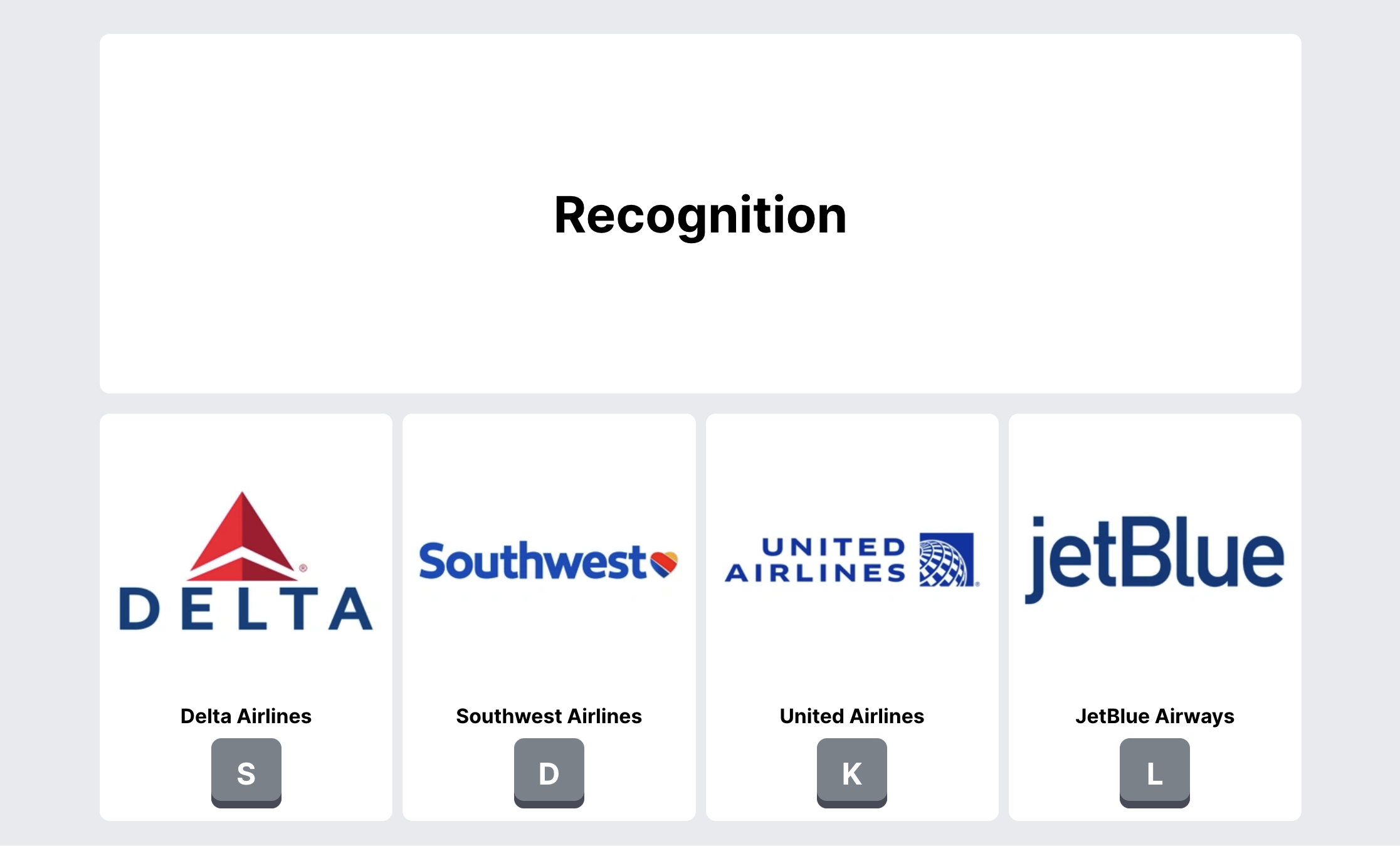The use of AI in market research, particularly integrating it into your research studies to easily leverage advanced research methodologies, is one of the best ways to turn basic usage and attitude metrics into detailed, actionable insights with clear recommendations.
Advanced research methods are sophisticated ways of capturing consumer insights, using machine learning algorithms and complex statistical analyses. Unlike basic usage and attitude questions (U&As), advanced research methods go beyond surface level reactions to capture the ‘why’ behind consumer behavior. Some examples of how they do this include leveraging aspects like subconscious thought processing (implicit methods), forced tradeoff decisions (MaxDiff), and underlying behavior relationships (Key Driver Analysis).
Given their complex nature, advanced methods can also be complex to apply in research studies - and many researchers don’t even consider them for lack of understanding or familiarity on how to use them. Fortunately, AI market research tools are making even the most complex advanced methods accessible to researchers of any skill level so that all businesses can benefit from high-quality, advanced insights to fuel decision-making.
Table of contents
- How to integrate advanced research methods using AI
- List of advanced research methods to integrate into your surveys with AI
- How quantilope integrates advanced research methods in surveys using AI
How to integrate advanced research methods using AI
To integrate advanced research methods into your market research projects, lean on AI to do the heavy lifting.
Advanced method setup:
AI-driven survey tools alongside virtual AI co-pilots can assist in advanced method setup by suggesting question phrasing and method inputs. For example, quantilope’s AI co-pilot, quinn, aids researchers in setting up implicit methods (SIAT and MIAT) by suggesting a list of dynamic elements to include. Dynamic elements are the associations within an implicit test that respondents subconsciously decide ‘fit’ or ‘don’t fit’ with a static element shown. That static element might be a brand, a category or industry, or something else - depending on the unique study.
Below is an example from quantilope’s Airline syndicated study where quinn may have suggested 'Recognition' among other airline associations for testing.

When you consider AI-powered search tools like ChatGPT, researchers can also generate survey question inputs for say, MaxDiff associations, Segmentation need-statements, or even features to test in a Conjoint analysis, simply by posing a question to a Generative AI chatbot. This would look something like, “List important features of a running shoe” or, “What are some features consumers look for in a new car purchase?”.
Leveraging AI in the setup stage of your advanced method research process will elicit inspiration and complexity in your study. Just be mindful that when using these kinds of tools, avoid plagiarism or paraphrasing by using the results more as research and inspiration that you can put your own spin onto, in your own words and tone of voice.
Advanced method analysis:
Once you’ve collected your advanced method insights, it’s time to analyze them. As mentioned above, if you’re not familiar with advanced method research, this can seem overwhelming.
AI technology and automation aid in advanced method analysis by sifting through your collected data, identifying patterns, and applying statistical analysis all on your behalf. Even a researcher who’s on the first day of the job can click a button that says ‘generate Segmentation results’ or click on a chart that automatically generates an advanced method chart. Once you’ve generated the charts/graphs you’d like in your report, AI tools can further analyze/organize your findings into topics (like quantilope’s topic modeling chart for open-ended feedback).
AI tools even benefit qualitative researchers through language models like natural language processing (NLP) that can automatically identify consumer sentiments and facial expressions (like quantilope’s inColor solution!). This saves researchers a ton of time that would have otherwise been spent sifting through hours of video survey footage to organize feedback into reportable findings.
Think of AI like a research assistant that sorts through relevant information in seconds and leaves you with only the actionable findings.
Advanced method reporting:
Finally, once you’ve analyzed all your survey findings, you’re ready to summarize them into one cohesive report to share with stakeholders.
The best AI tools can help at the reporting stage by leveraging two kinds of AI: Generative AI and Synthesizing AI. Generative AI is useful for generating compelling advanced method chart titles and descriptions (a key feature of quantilope’s quinn). Synthesizing AI can summarize the entirety of your advanced method report or dashboard to leave stakeholders with an actionable list of takeaways, highlighting only the key information.
Generative and Synthesizing AI research tools are especially useful for advanced methods as the findings are naturally more complex than typical usage and attitude metrics. Some advanced methods require a bit more thought and analysis, making AI a useful tool to streamline your reporting workflow.
Back to table of contents
List of advanced research methods to integrate into your surveys with AI
-
Conjoint analysis: A Conjoint analysis assesses consumer preferences by showing respondents hypothetical products with varying product attributes. AI-powered chatbots can streamline the design of Conjoint inputs by suggesting a list of features to test through various product configurations.
-
MaxDiff analysis: MaxDiff (Maximum Difference Scaling) helps prioritize a long list of features or elements by repeatedly asking respondents to indicate their most and least preferred items from a changing choice set. Similar to Conjoint, AI algorithms can efficiently generate a list of items to test in your MaxDiff - or at least provide initial inspiration and guidance that you can further tailor. Learn more about MaxDiff analysis in quantilope's Academy course here!
-
Single or Multi Implicit Association Test (SIAT or MIAT): An implicit association test captures respondents’ subconscious feedback around a single product, brand, or category (SIAT) or multiple products, brands, and categories (MIAT). It works by showing respondents a series of screens where one or more static element remains the same (the name of the product, brand or category in a SIAT and the competitive products, brands, or categories tested in a MIAT). On each rotating screen within the test, the dynamic elements shown will change, forcing respondents to quickly react and choose which static element(s) they associate with that element shown. AI tools can help with the generation of these dynamic elements to include in your implicit association test so you are left with a comprehensive analysis on various aspects of your product, brand, or category - even ones you may have forgotten to include yourself.
How quantilope integrates advanced research methods in surveys using AI
quantilope harnesses the power of AI to streamline the survey creation process from start to finish through its AI co-pilot, quinn.
Implementing AI into your market research process starts from the moment you begin brainstorming ideas for your market research survey. quinn can inspire question framing and question inputs to offer a new perspective, whether you’re trying to come up with a list of advanced methods inputs (like the examples mentioned above), looking for ways to describe a product in an A/B or Concept Test, or looking for the right way to pose a question. quinn can also create actionable summaries and automate data analysis, aggregating all your advanced method insights into a cohesive takeaway for stakeholders.
With automation and AI, you no longer have to be a scientific research expert or adept in scientific literature to leverage advanced methodologies with accuracy and ease. Lean on quantilope’s AI-driven tools - like quinn - to gain deeper insights into your consumers, monitor insights in real time, make better-informed decisions without the added effort, and stay ahead of fierce competition.
To learn more about quinn and quantilope’s automated advanced methods, get in touch below!




